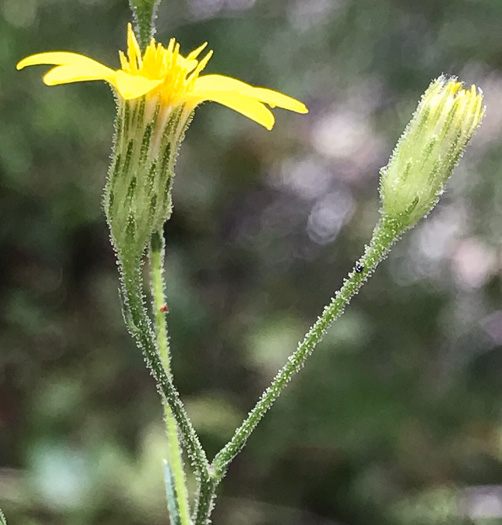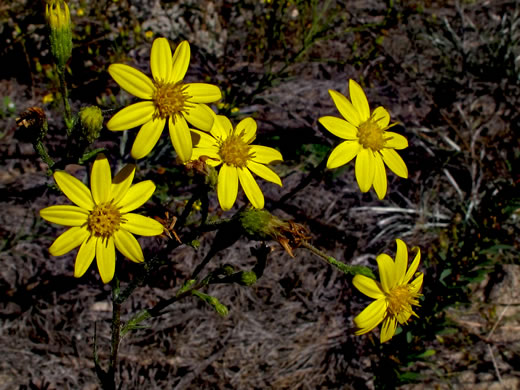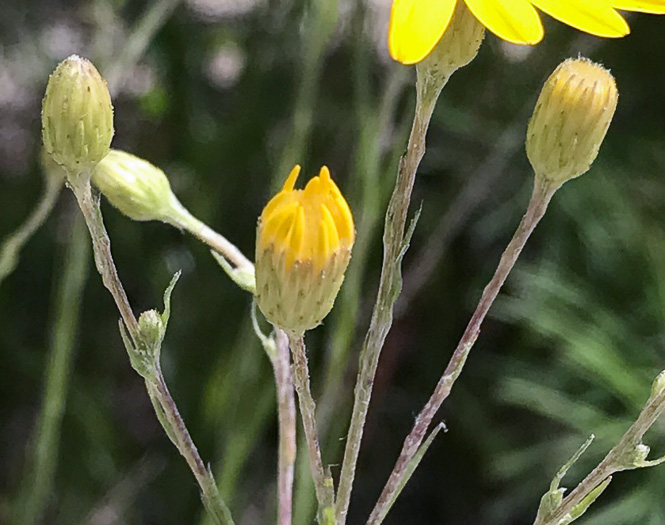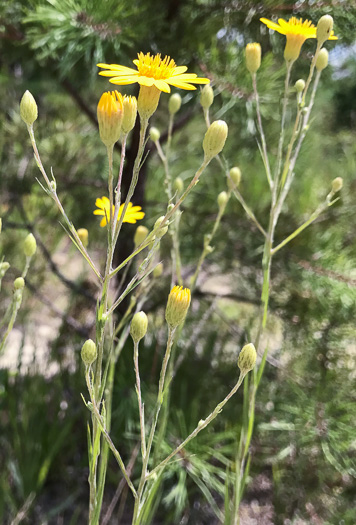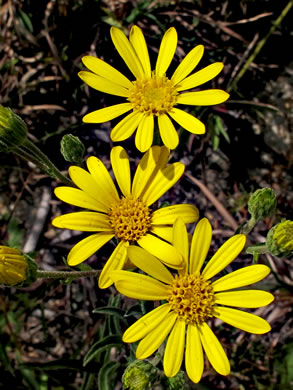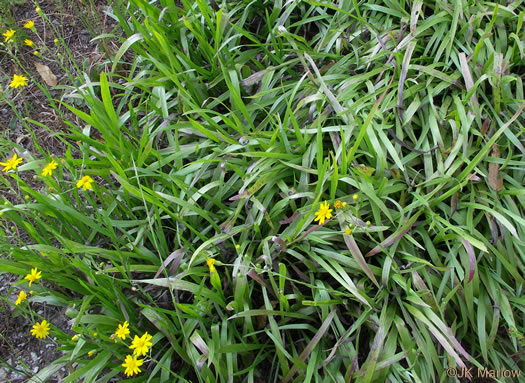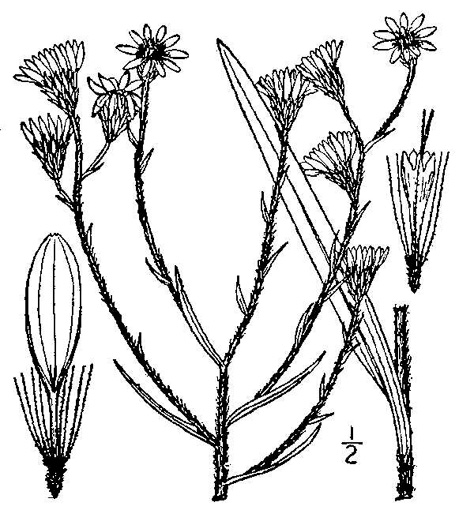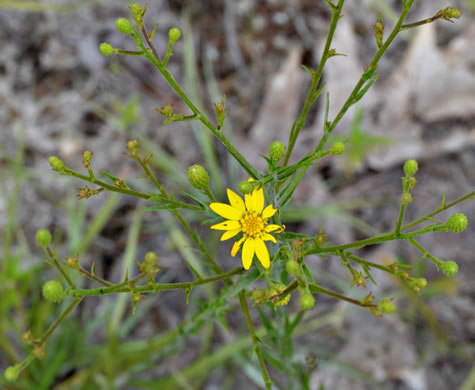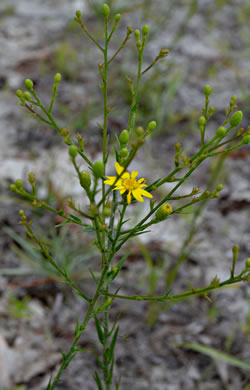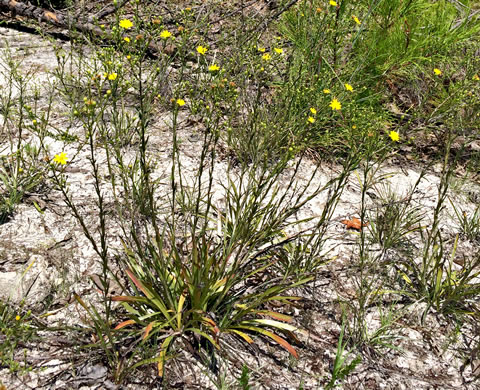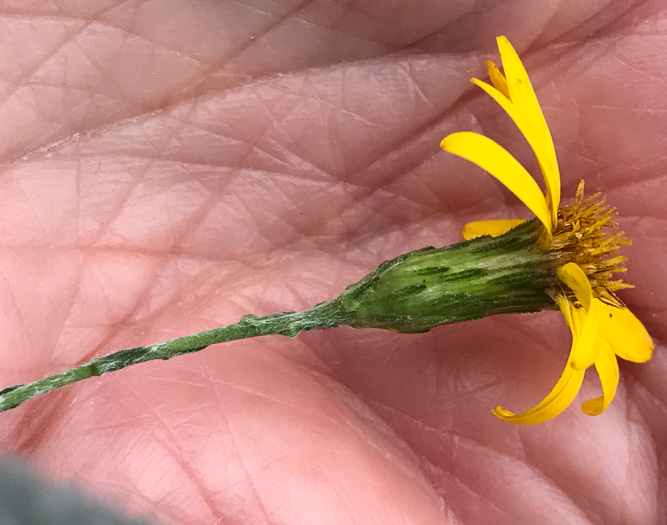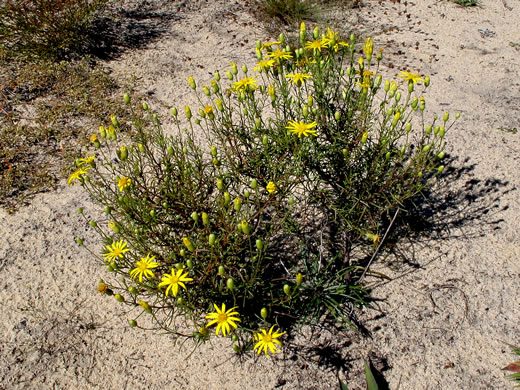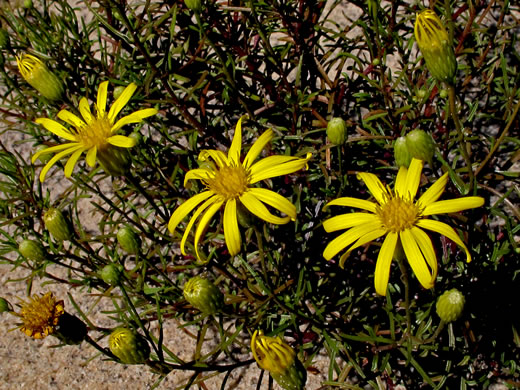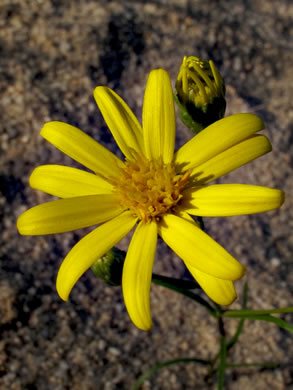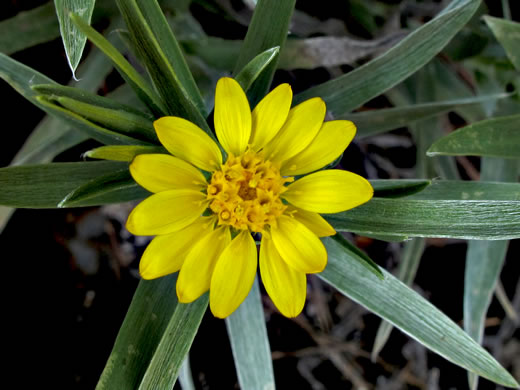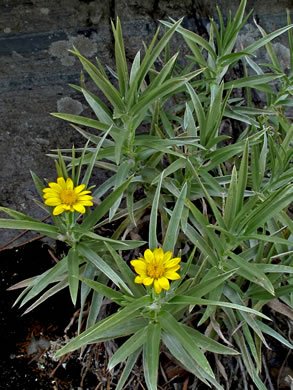Your search found 24 image(s) of Grass-leaved Golden-asters.
To see larger pictures, click or hover over the thumbnails.
To go to the plant's detail page, click its name.
 Habitat: Longleaf pine sandhills, dry woodlands, forests, and disturbed places, apparently in the NC Mountains only in the Escarpment
Habitat: Longleaf pine sandhills, dry woodlands, forests, and disturbed places, apparently in the NC Mountains only in the Escarpment
Peduncle, upper stem, phyllaries densely glandular-hairy (stipitate-glandular), per Weakley's Flora.
Outer to inner phyllaries triangular, usually coarsely stipitate-glandular, per Taxonomic synopsis of Pityopsis (Asteraceae) (Nesom, 2019).
Ray florets 6-10; disc florets 15-45, per Flora of North America.
Grasslike leaves with silky-silvery hairs on stems and leaves, per Wildflowers of the Eastern United States (Duncan & Duncan, 1999).
Lower leaves less than 10mm wide. Basal leaves much longer than stem leaves, per Weakley's Flora.
 Habitat: Longleaf pine sandhills, dry woodlands and forests (such as ridgetop pine/heath communities in the Mountains), roadbanks
Habitat: Longleaf pine sandhills, dry woodlands and forests (such as ridgetop pine/heath communities in the Mountains), roadbanks
Lower leaves up to 20mm wide. Basal leaves much longer than stem leaves, per Weakley's Flora.
Phyllaries eglandular, or the inner phyllaries glandular, at least distally, per Weakley's Flora (2020).
Outer phyllaries linear triangular, innermost narrowly oblong-lanceolate, per Weakley's Flora (2020).
Peduncles and upper stem eglandular to sparsely glandular, per Weakley's Flora (2020).
Ray florets 9-13; disc florets 15-50, per Flora of North America.
Plants spread vegetatively by underground stems (rhizomes), forming colonies, per Wildflowers & Plant Communities of the Southern Appalachian Mountains and Piedmont (Spira, 2011).
 Habitat: Longleaf pine sandhills, other dry woodlands
Habitat: Longleaf pine sandhills, other dry woodlands
... are similar to var. tenuifolia, per Flora of North America.
Stem leaves reduced upwards, only slightly overlapping; lower lvs to 20mm wide, per Weakley's Flora.
Small-headed... Phyllaries all similar, linear-triangular, evenly imbricate, per Weakley's Flora (2020).
 Habitat: Longleaf pine sandhills, sandy roadsides
Habitat: Longleaf pine sandhills, sandy roadsides
The epithet pinifolia means "with leaves like a pine tree", per Atlantic Coastal Plain Wildflowers (Nelson, 2006).
Leaves and stem glabrate, not silky pubescent; leaves 0.8-1.5mm wide, per Weakley's Flora (2015).
The numerous narrowly linear leaves distinguish it from our other Pityopsis, per Atlantic Coastal Plain Wildflowers (Nelson, 2006).
Rays yellow, 10-20, 1-1.5cm long, per Vascular Flora of the Carolinas (Radford, Ahles, & Bell, 1968).
 Habitat: Flood-scoured rocks along rivers
Habitat: Flood-scoured rocks along rivers
The heads are small, with about 12 rays 3/8" [1cm] long, per Wildflowers of the Southern Mountains (Smith, 1998).
The stems are leafy up to the flower heads, per Wildflowers of Tennessee, the Ohio Valley, and the Southern Appalachians (Horn, Cathcart, Hemmerly, & Duhl, 2005).
Leaves linear, 1-3" long, with silky hairs that give a silvery appearance, per Wildflowers of Tennessee, the Ohio Valley, and the Southern Appalachians (Horn, Cathcart, Hemmerly, & Duhl, 2005).
A low, much-branched plant growing on rocks along river gorges. Rare, per Wildflowers of the Southern Mountains (Smith, 1998).


